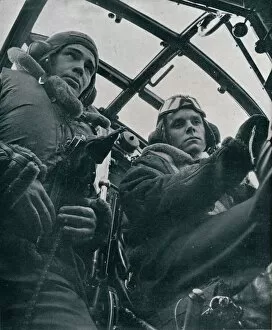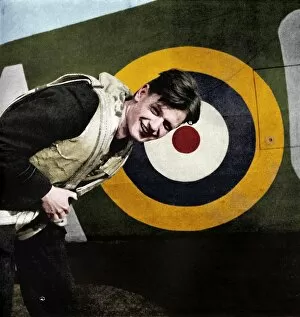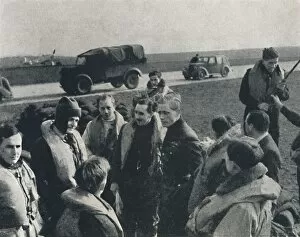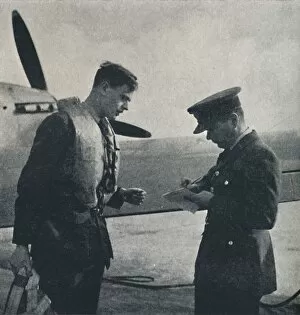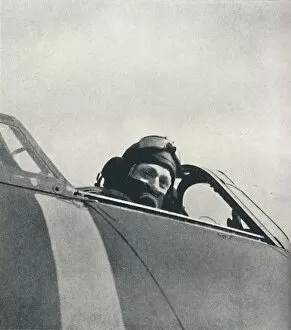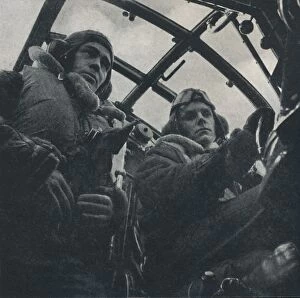Bomber Pilot Collection
"Bomber Pilot: The Unsung Heroes of World War II" In the midst of the chaos and destruction that engulfed Europe during World War II
For sale as Licensed Images
Choose your image, Select your licence and Download the media
"Bomber Pilot: The Unsung Heroes of World War II" In the midst of the chaos and destruction that engulfed Europe during World War II, there were men who took to the skies with a singular purpose - to strike fear into the heart of Hitler's war machine. These brave individuals, known as RAF bomber pilots, stood at the forefront of aerial warfare in their relentless pursuit to bring an end to tyranny. The year was 1941, and as tensions escalated, these courageous aviators became a symbol of hope and defiance against Nazi aggression. With every mission they embarked upon, they risked their lives for a cause greater than themselves. Whether serving as second pilots or commanding entire crews, their dedication knew no bounds. Alfred T Palmer captured this spirit in his iconic photograph from 1942 titled "The kind of man Hitler wishes we didn't have. " It depicted a bomber pilot standing tall amidst the wreckage left behind by his deadly payload - a testament to both his skill and unwavering determination. Cecil Beaton's photographs from around 1943 showcased not only the bomber crews but also the ground staff who tirelessly supported them. Together, they formed an unbreakable bond forged through shared sacrifice and camaraderie. Their faces revealed both exhaustion and resilience as they prepared for yet another perilous mission. Beaton's artwork further immortalized these heroes on canvas. In "The flourish set on youth" from 1941, he captured their youthful exuberance before embarking on flights that would test even the strongest among them. His paintings like "At the controls, " "Entering, " and "Arriving" offered glimpses into their daily lives - moments filled with tension, relaxation, anticipation, and relief. These images serve as reminders that behind every successful bombing raid lay countless hours of training and meticulous planning. Bomber pilots were not just skilled aviators; they were strategists who meticulously calculated their every move.

